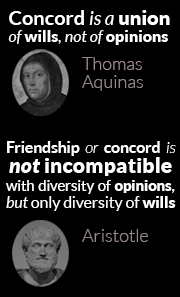Starbucks’ PR tweets stink
I’ve just laughed out loud at Lucy Kellaway’s Weekend FT story about Twitter, and Starbucks’ allegedly smelly toilets, that’s now doing the rounds as Lavatorygate.
For those who missed it, here’s a recap. Armando Giovanni Iannucci, the political satirist, Twittered to his 80, 000 followers:
“Still surprised that, despite their market dominance, Starbucks haven’t eliminated the slight smell of lavatory you get as you enter.”
As Kellaway reports, within minutes, Darcy Willson-Rymer, the UK head of Starbucks, replied:
“Thanks for your feedback. Which store did you visit?”
Mr Iannucci confirmed that he was at the Warwick services. He added, however, that the horrid pong was reeking in several stores and the chemical waft hits you by the front door. Kellaway says that the managing director thanked him again and promised to investigate. The satirist then tweeted:
“Good news. Starbucks are now looking into their pervasive lavatory smell.”
Now people at the highest level across the world are talking about Lavatorygate at Starbucks!
This little example highlights how Twitter’s supposedly personal format is a public trap waiting to snare the unwary. According to Kellaway, Lavatorygate raises three more important questions:
“The first is: does the coffee chain really smell like a lavatory? If it does, the MD should not have been relying on this circuitous and random route to make the discovery. Surely his staff should have tipped him off long ago.
“The second question is about reputation. Does it matter that a satirist tells his 80,000 Twitter followers that he thinks Starbucks stinks? I doubt it. As far as I can tell none of them responded and I’d be amazed if even one person had coffee that morning at Caffè Nero instead.
“Still, even if Mr Iannucci’s remarks were potentially damaging, they raise a third question: what should Starbucks have done about it?”
The answer, of course, is nothing on Twitter, particularly as the comment was not even directed @Starbucks. Replying, as she says, was a waste of senior management time. So she Twittered Darcy Willson-Rymer and asked if he did his own Tweeting or whether somebody did it for him. He replied via a tweet:
“No, all replies and tweets are from me. I think it is important to listen to customers and learn from the mistakes we make so I try to respond to all.”
So she set a test and wrote:
“Starbucks is a riddle. The coffee is weak and pricey, the decor horrid and the place often grubby. So why do we go on going there?”
Twenty hours later, there was still no reply. She comments:
“Maybe it’s because Mr Willson-Rymer doesn’t know the answer any more than I do. Or maybe because I used a Twitter account that only has 10 followers and so this disgusted, yet loyal, customer doesn’t count.”
She also followed up with other people who had complained about Starbucks on Twitter. She asked them if they’d received replies. They hadn’t. That’s the point about setting an expectation on Twitter. If Mr Willson-Rymer is serious, then he’s no longer MD, but the full time manager of satirical trivia about Starbucks on Twitter. When he starts getting picky about which ones to respond to, he risks pissing off those whom he cold-shoulders.
But why do we use Starbucks? I think it’s mostly because PLUs do. Many a product works on this crowd-induced trend-setting basis, and it trumps various inadequacies or inconveniences. It certainly overcomes the problem of over-priced merchandise, even in recessions. It accounts for a lot of Apple’s success. In short, some trends are just not rational. They are a testament to great product roll out (execution) and, not least, great branding backed by great marketing that creates status-enhancing products and or different life-styles choices. For sure, neither company’s PR is exemplary, and neither are their products – see here for Apple and here for Starbucks.

Well said, Paul. Sometimes the best thing a PR can do is say nothing. The same goes for CEOs. It’s called discipline. There are plenty of reasons not to use Starbucks – the prices, the reliance on syrups to sweeten most of the drinks they sell which must cause health issues and the company’s political support of liberal pressure groups. The toilets aren’t an issue…!
I think you can differentiate between the more legitimate comments that warrant responding to. There are obviously a lot of pranksters that can waste your time with stupid questions/comments. As a GM’s time is precious, I think what questions he choses to answer is up to him. The fact that he manages his Twitter account himself gives him more credibility. Obviously the more serious questions will be addressed. At least the GM is on Twitter and is listening to what people are saying about his brand. It’s better to respond to some important questions than ignoring all questions or not being on Twitter at all.
Andreas, yes, you’ve got a point. I think it is all about thinking before you reply. That requires users to be aware of the medium’s limitations. If the MD is to run his or her own account on Twitter then that calls for setting realistic expectations. Promising to respond to all enquiries, comments and complaints is just silly. Not only is it impractical, it is not what MDs are employed to do. The great thing about Twitter is that it allows firms to listen mostly in silence to the noise in real time. More often than not, there are better, more credible and alternative avenues for making use of what you learn on Twitter. It would also be a mistake to take the activist nature of Twitter (it is a relatively rarified environment) as necessarily representing public or customer opinion/experience in general. Sure, it is a question of commonsense, which seems to be lacking at Starbucks; at least by its UK MD.